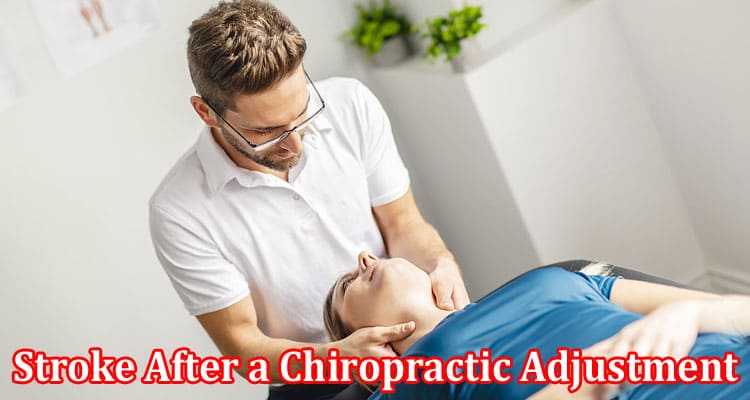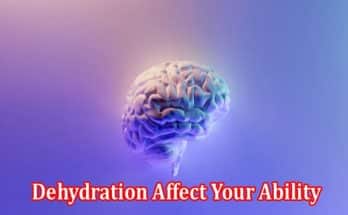Introduction
The world of alternative medicine has undergone a remarkable transformation in recent years, with advanced chiropractic care taking center stage as a non-invasive and drug-free therapy for various musculoskeletal issues. Patients seeking relief from back pain, neck discomfort, migraines, and other ailments have turned to chiropractic adjustments with hope and optimism. However, amid the growing acclaim, the medical community has raised concerns about potential stroke risks associated with neck manipulations during chiropractic adjustments.
This article embarks on an exploratory journey to shed light on the signs and symptoms of stroke that may emerge after a chiropractic neck manipulation. With this vital knowledge, patients and healthcare providers can navigate the path of informed decision-making and prompt response in the face of potential complications.
Unraveling the Enigmatic Mechanism
The art of chiropractic care relies on precise adjustments to the spine and neck, aiming to restore the body’s natural alignment and promote optimal functioning. The chiropractor’s skillful hands apply gentle thrusts or quick, controlled movements to targeted areas to alleviate pain and improve mobility. However, the neck’s complex anatomy, particularly the vertebral arteries, has the potential for unexpected consequences.
The vertebral artery, a critical blood supply conduit to the brain, travels through the cervical spine, just behind the vertebrae. In rare instances, the high-velocity thrusts used during neck manipulations can cause tiny tears in inner lining of the arteries, a condition called vertebral artery dissection (VAD). This injury may pave the way for blood to enter in the arterial wall and form a clot, which can dislodge and travel to the brain, causing a stroke.
The interplay of force, precision, and individual anatomy make the risk of VAD during chiropractic neck adjustments relatively low but only partially absent. Hence, cautious and precise techniques are paramount to ensure patient safety.
Identifying Risk Factors and Precautions
Understanding the factors that may increase the likelihood of experiencing stroke after a chiropractic adjustment becomes crucial for chiropractors and patients. Certain predisposing conditions may render individuals more susceptible to arterial dissections. Among them are connective tissue disorders, hypertension (high blood pressure), blood clotting disorders, and a history of cervical spine trauma. Additionally, medications that mostly affect blood clotting, such as anticoagulants, can heighten the risk of complications during neck manipulations.
Adelaide chiropractors are cautious in navigating these potential hazards, conducting comprehensive patient assessments before adjusting. Thorough medical histories, physical examinations, and imaging studies enable chiropractors to identify red flags that may necessitate alternative treatment options. Transparent and open communication with patients allows for shared decision-making, ensuring that the chosen course of action aligns with the patient’s unique health profile and preferences.
Symptoms – What to Look Out For to Recognize Stroke
Equipping patients with the knowledge to recognize the signs and symptoms of a stroke following a chiropractic neck manipulation can be life-saving. Prompt identification and timely medical intervention can significantly impact a patient’s prognosis and recovery. The classic warning signs of a stroke, often remembered by the acronym FAST (Face drooping, Arm weakness, Speech difficulties, Time to call emergency services), can apply to stroke occurrences following neck adjustments. In addition to these well-known signs, patients should remain vigilant for other potential indicators, such as sudden numbness or weakness on one side of body, difficulty understanding speech or speaking, severe headaches, and problems with balance or coordination.
It is crucial to note that stroke symptoms may not manifest immediately after chiropractic adjustment. In some cases, symptoms may appear even days later or hours . Therefore, patients must remain alert and seek medical attention if they experience unusual sensations or symptoms following the procedure.
The Role of Healthcare Providers
Healthcare providers, particularly chiropractors, bear the responsibility of vigilant post-adjustment care. They act as guardians of patient safety, closely monitoring patients for signs of stroke following neck manipulations. Chiropractors create an environment where patients feel comfortable sharing concerns or potential symptoms by encouraging open communication and trust-building with their patients.
Chiropractors continuously educate themselves on the latest research and best practices in stroke risk assessment and management as part of their commitment to patient well-being. By staying up-to-date with evolving guidelines, chiropractors further enhance their ability to provide effective and safe care.
Immediate Action – When to Seek Emergency Medical Attention
Time is of the essence in the face of a stroke. Immediate action is paramount when stroke symptoms are observed following a chiropractic neck adjustment. Patients, their families, and healthcare providers should quickly activate emergency medical services and seek medical attention.
Administering clot busting medication such as tPA means tissue plasminogen activator after the onset of symptoms can significantly improve stroke outcomes. Healthcare providers must inform patients about the importance of seeking immediate medical attention and its potential impact on their recovery and overall health.
Final Words – Start Gaining Further Awareness
Recognizing the signs of stroke after a chiropractic neck manipulation is a pivotal aspect of patient safety and informed decision-making. Reading this article has set you on a journey of exploration, equipped with valuable information on stroke symptoms and the associated risks following chiropractic adjustments. With this knowledge, patients become captains of their healthcare destinies, navigating toward musculoskeletal relief with vigilance and awareness.
Healthcare providers, in turn, assume the role of guardians, standing ready to chart the course to patient well-being. With heightened awareness and proactive measures, patients and healthcare providers join hands, unraveling the enigma, embracing the voyage of understanding, and sailing towards safe and effective chiropractic care. Together, they orchestrate a symphony of wellness, empowering individuals on their journey to musculoskeletal relief and overall health.




